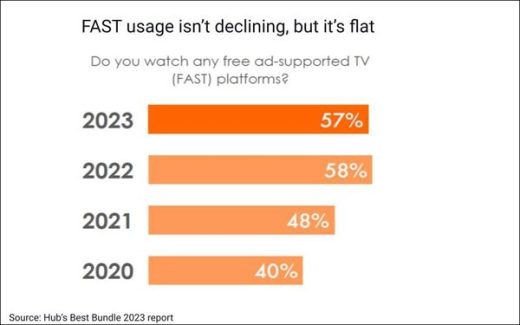Turnaround: Consumers Reduce Video Services Stacking, FAST Adoption Growth Stalls
Turnaround: Consumers Reduce Video Services Stacking, FAST Adoption Growth Stalls
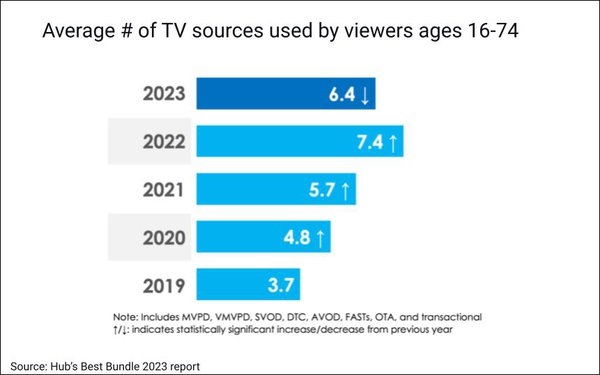
This year has seen consumers begin to reduce the number of video services they use — the first time in the five years that Hub Entertainment Research has been conducting its “Best Bundle” survey.
The results also show a significant drop in the number subscribing to three or more of the “Big 5” paid streaming video-on-demand (SVOD) services, and no significant growth in use of free, ad-supported streaming services (FASTs).
The latest survey finds the average U.S. household now using 6.4 video services — down 14% from a peak of 7.4 in 2022.
The number rose steadily in recent years, starting at 3.7 in 2019 (chart above).
Although the causes for the drop are varied, it is likely that inflation and perceptions about the economy are the primary reasons, according to Hub.
Not surprisingly, the survey found a significant drop in the number of viewers subscribing to traditional cable/satellite TV services (multichannel video programming distributors/MVPDs): down to 55%, from 62% last year.
However, even as the number using streaming only continues to grow — now at 27% — there are still far more still using both traditional (MVPDs or over-the-air) and streaming sources (63%).
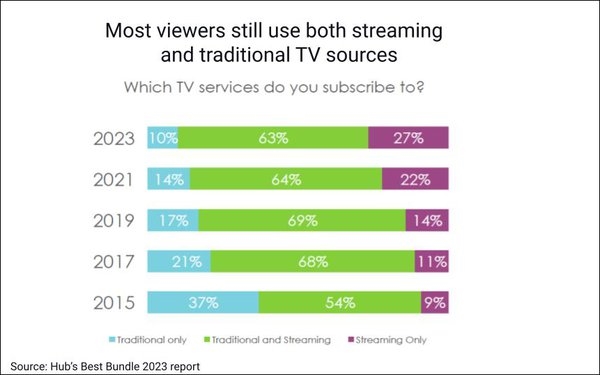
Use of virtual, streaming-only vMVPDs is flat, at about 17%.
But the survey also found a decline in the number subscribing to at least one SVOD: Down to 82% this year, from 89% in 2022.
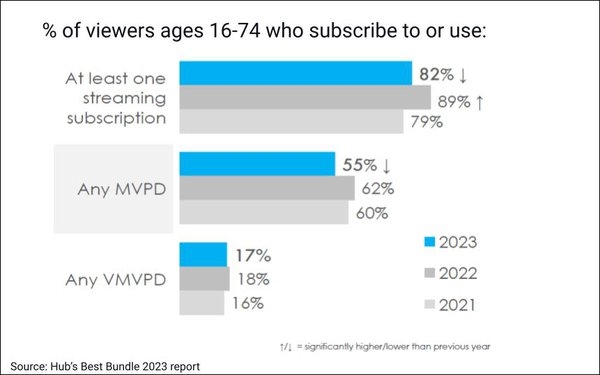
Reinforcing the “de-stacking” finding, significantly fewer viewers report currently having paid subscriptions to three or more of the “Big 5” SVODs (Netflix, Hulu, Amazon, HBO Max or Disney+): down to 42%, from 50% in 2022.
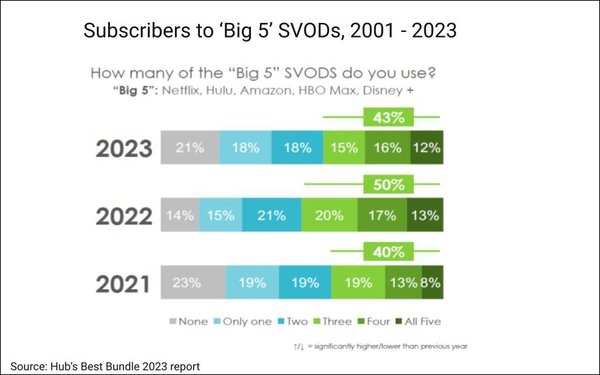
More than a quarter (27%) of viewers indicated that they expect to sign up for at least one new subscription in the next six months. That’s up from 21% in 2021, but down from 33% in 2022.
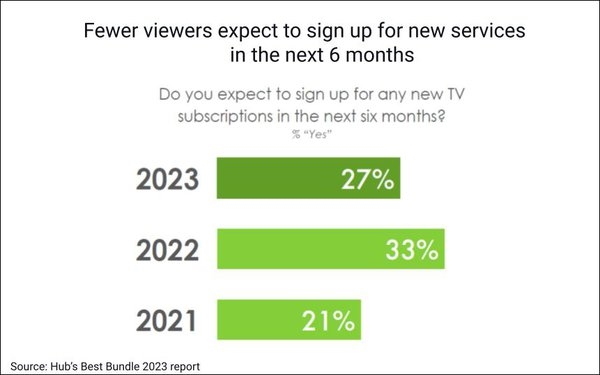
As for FASTs, user saturation was unchanged from last year, at 57% (no statistically significant difference with 2022’s 58%). Hub describes this as “maintaining momentum,” but given the strong user growth numbers being reported by leading FASTs and consumer cutbacks in discretionary purchases in the face of inflation, the lack of growth in this free entertainment format as reported in this survey seems surprising.
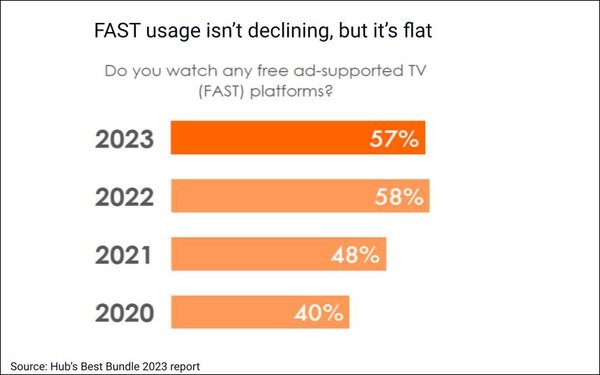
More than a quarter (27%) of viewers indicated that they expect to sign up for at least one new subscription in the next six months. That’s up from 21% in 2021, but down from 33% in 2022.
“Booms don’t last forever, and inflation and economic worries may have finally slowed the roll of consumers looking to stack traditional and streaming subscription TV services,” said David Tice, senior consultant to Hub and co-author of the study.
For the report, Hub surveyed 1,603 consumers with broadband, ages 16 to 74, who watch at least one hour of TV per week. The survey was fielded in March/April 2023.
(8)

